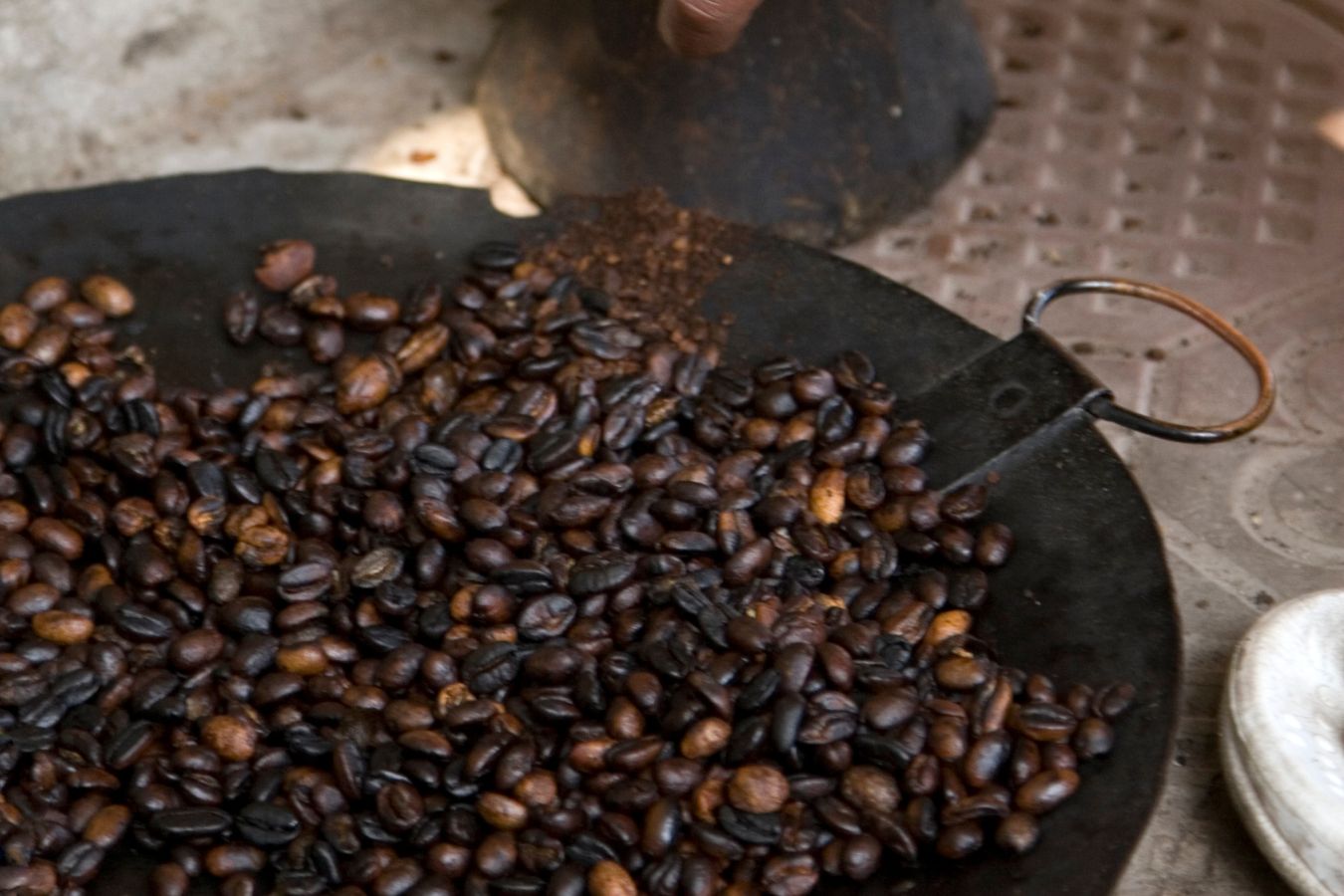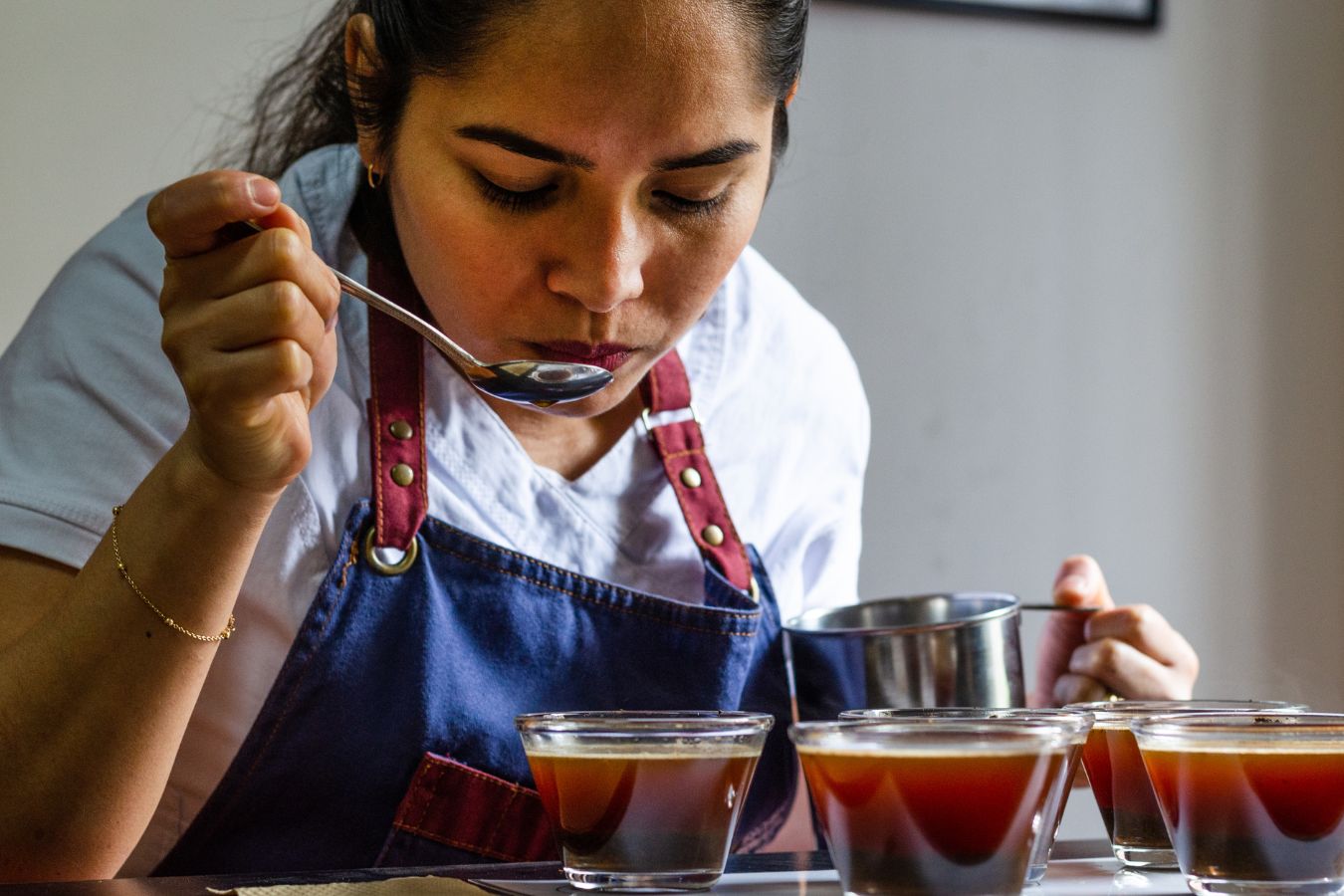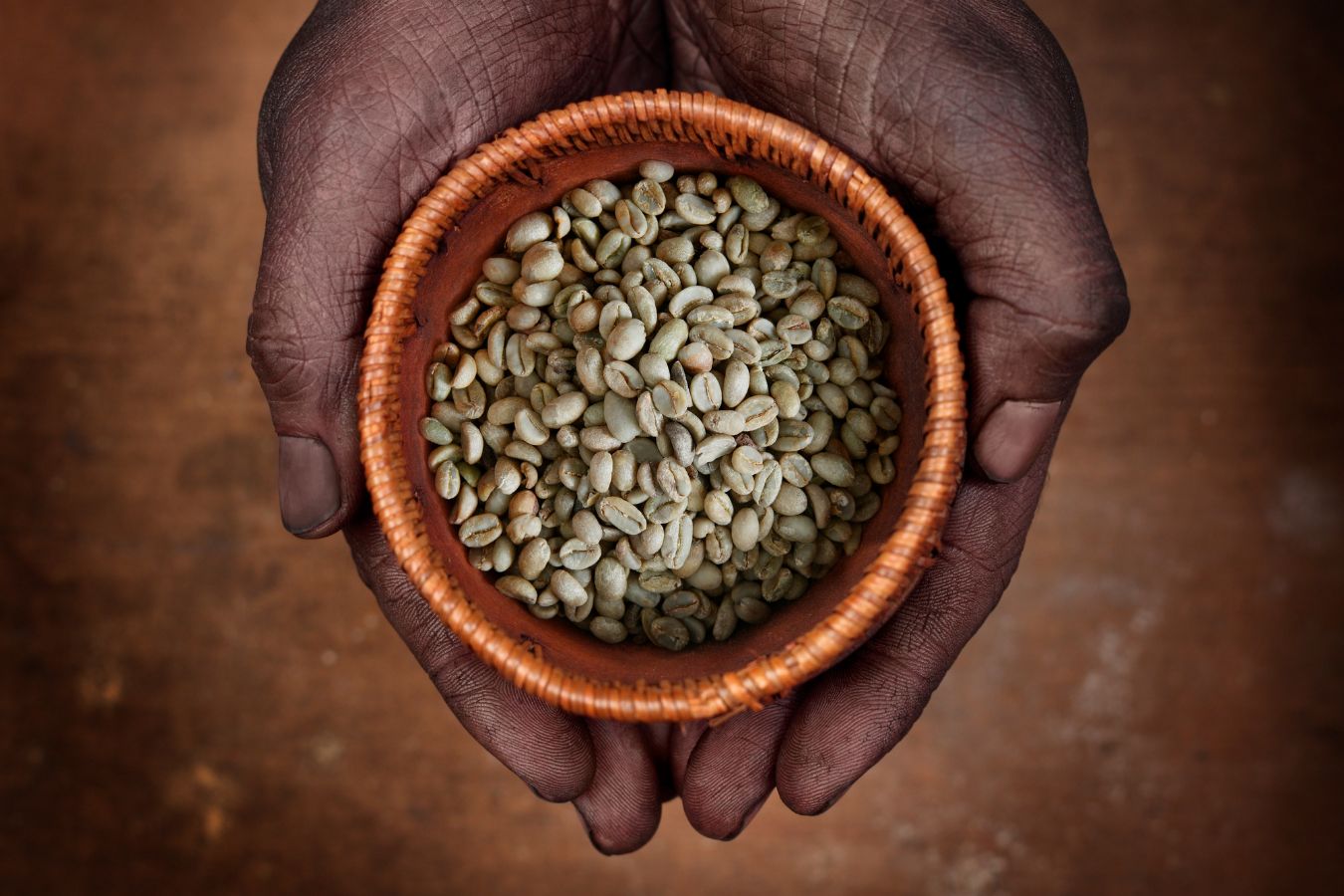
Ethiopia is the birthplace of coffee, as well as its origin. Ethiopia is known for its world-famous coffee beans. Ethiopia’s reputation is built not only because it is the birthplace of coffee but also because it produces the best coffee on the planet.
A few facts about Ethiopian coffee
Ethiopia is the birthplace of coffee
Return with me to the year 850 AD. This was when a nomad goat herder named Kaldi discovered coffee. Kaldi noticed her goat eating the coffee fruit and then madly dancing. He brought this “magic” fruit home to study since he was curious and fascinated by it.

It was with a monk that he first exchanged information about this grain. He claimed it was a manifestation of magic when he put the coffee beans into the fire. The coffee is roasted when the beans are exposed to fire. The alluring aroma of coffee permeates the entire area. It was regarded as mystical, perhaps because of the peculiar smell. It’s fascinating how coffee flavor is discovered in this manner! Of course, coffee evolved into the drink that it is today.
For millennia, Ethiopian coffee plants have grown wild. That means the coffee has been developed and cultivated naturally and instinctively in this area for a long time. It is not the type of coffee introduced locally by colonial empires in other coffee-producing countries. As a result, it’s easy to see why Ethiopia is known as the home of the best coffee in the world!
Relevant figures
Ethiopia’s natural environment is ideal in that outstanding coffee can be made without additional ingredients. Ethiopia produces over a thousand different types of coffee.
Ethiopian coffee is grown all across this part of South Africa. However, the southern mountains, which have the best altitude and development circumstances, are the most densely populated.
Sidama, Yirgacheffe, Harrar, Limu, Djimma, Lekeemi, Wallega, Gimbi are some of the coffee-growing regions in Ethiopia.
Kudhome, Gesha, Djimma are some of the most popular coffee kinds.
Arabica is a type of coffee.
Altitude of cultivation: 1,500-1,800 m (above sea level)
Dry and wet processing methods are available.
Coffee is graded on a scale of one to nine. There are the following items:
+ Specialty Coffee (Grades 1-2)
+ Commercial product line for grades 3–9.
November to February is harvest season.
Ethiopian coffee manufacturing
Ethiopia is the world’s fifth-largest coffee producer and Africa’s highest producer.
Most coffee is grown in Ethiopia’s southernmost province, Sidamo/Sidama. In this Sidama country, Yirgacheffe is known for the farms that produce the best coffee in the world.
Second, Guji is located south of Sidamo on this land. Guji is known for having some of the world’s most excellent roasters. They can enhance the flavor of your coffee. Consider how sweet, with touches of melon and peach, your jasmine-scented coffee would be. When I started drinking again, I mistook myself for a tea drinker.

Third, Harrar, located in eastern Ethiopia, must be mentioned. This is a well-known region for dry-processed coffee production. Wild fruit flavors in the form of syrup are prominent in this region’s coffee.
Smallholder farmers produce the majority of coffee. The Ethiopian Commodity Exchange (ECX) – Commodity Exchange is where they sell their coffee. The Ethiopian government launched ECX in 2008.
The EXC’s role is worth noting.
Farmers can sell their coffee directly to purchasers on EXC, which is a commodity exchange. This is a reliable, safe, and transparent trading system.
This trading approach has definite advantages. However, roasters will find it tough to backfire on the farm in terms of quality and taste. This restricts the market and the variety of flavors available to buyers.
As a result, in 2017, the government permitted farmers to keep their coffee and actively auction it off to collectors. This shift makes it easier for appraisers and buyers to form ties with farms. This event creates an excellent contribution to the advancement of coffee quality. Furthermore, it serves as a motivator for farmers to increase their investment in farming and output. Because the better the coffee is, the higher the price it sells for.
Ethiopian coffee’s high points (Coffee)
Ethiopia is known for producing high-quality Arabica varietals. Ethiopian coffee is known for its delicate characteristics, including flowery, herbaceous, and citrus notes.
The diversity of species, as well as their various varieties. As a result of this mix, numerous distinct coffee varietals have emerged, each with its distinctive flavor profile. As a result, Ethiopian coffee has a difficult time competing.
Ethiopian coffee is worth a lot of money
Ethiopian coffee is one of the world’s oddest coffees. Also, the coffee with the most nuanced and rich flavors. Experts believe it deserves to be designated as a UNESCO World Heritage Site.
Coffee was once thought to be a highly profitable commodity for Ethiopia. Then there’s the fact that it’s a national cultural and religious icon.
Ethiopian coffee has always been a central figure in several essential cultural rituals in this South African country. The annual Ethiopian ceremony of Coffee Ceremony, for example, dates back centuries. The family’s mother roasts fresh coffee in a clay pan every morning, probably with some seasoning.

Finely ground coffee beans are boiled in a traditional Jebena clay kettle. Hot coffee is poured into cups for the entire family and guests to enjoy as a ritual. These rituals typically last between two and three hours.
When an Ethiopian offers you a cup of coffee, they highly value you. Offer coffee as a token of their friendship and show of affection. “Coffee is our bread,” says a famous Ethiopian proverb. Coffee, on the other hand, is essential to Ethiopians.
Ethiopian coffee classification (coffee)
As previously stated, Ethiopian coffee is often assessed using Grades (abbreviated as “G”). Many elements go into the classification: floor size, percent breakable, wetness, contaminants, etc.
Grades 1
This is the specialty coffee level. Coffee has no particular flaws at this level (less than three defect points).
About 90% of floor particles are 18 (7.1mm), with impurities accounting for 0.5 percent. There are no mold bugs, and there is no weird odor. Humidity levels must be between 9 and 13 percent.
Grades 2
This is also where specialty coffee is sold. Approximately 90% of floor beads are 16 (6.3mm). Impurities 0.5 percent, black error, and martial grain maximum 2 percent. The humidity level is around 12.5%.
Grades 3 through 9
The other kinds are not specialty coffees because they do not meet the two standards of grade 1 and grade 2. It’s classified as a low-cost commercial coffee.
Smell
Ethiopian coffee is well-known for its fruity and floral aromas. Ethiopian coffees have a high acidity level and flavors that range from mild to complex, depending on the varietal and growing conditions.
Ethiopian coffee leaves a lasting sense of flavor purity, revealing even the most complex flavors. Furthermore, it exudes brightness and optimism at all times.
Yirgacheffe coffee from Ethiopia is frequently compared to Kenyan coffee. However, setting a scale to evaluate these two superb coffees is tough. Each type of thing gleams in its special way. Kenya is classic jazz and Ethiopia is classical music. This example demonstrates that each is exceptional in its own right, standing out in the eyes of the world and its own “audience.”
Sidamo is a well-known land with distinct flavors.
The diversified terrain of Sidamo has resulted in a coffee with a vibrant flavor. Here, coffee comes in various tastes, including fruit, nuts, and herbs.
Yirgacheffe
This is Ethiopia’s highest coffee region with a height of 1,700 to 2,200 meters above sea level. Yigacheffe is known for producing some of the world’s most excellent coffee. This coffee also complies with SHG/SHB standards.
Lemon and citrus notes with a light sweetness are always present in this region’s coffee.
Gimbi, Lekempi, and Wellega
Both natural and wet processing procedures are used in this area. Compared to Sidamo and Yirgacheffe, the flavor is rich and genuine.
Jemima and Limu
Limu coffee is wet-processed, while Djimma coffee is unprocessed. It will have a moderate flavor and superior attributes to coffee in Sidamo.
Harrar
The area is hot all year, with a desert-like landscape that gives coffee a distinct earthy aroma. On the other hand, the coffee is well-liked since it contains blueberry and strawberry flavors. And it’s one of the world’s top ten most excellent coffees.
The pods of coffee beans are used to prepare a tea called cascara in this region. The flavor of cascara is incredible, and it’s incredibly different from leaf tea. This is a well-known Harrar traditional product.
There are a few different methods to make and enjoy this dish
Ethiopian coffee is known for its light body and high acidity. As a result, it is suggested that you prepare it manually in a drip-style.
It’s important to remember that to make a nice cup of coffee, the coffee you use must always be fresh.
Pour-over
Ethiopian coffee enthusiasts always opt for the pour-over method. Because the brewer can regulate and change the brewing process. This is a significant benefit of producing the most flavorful and well-balanced coffee.
Chemex is the most commonly used filter for pour-over. Because the final coffee has the same texture and highest notes as tea. The one who appreciates it and is not ashamed to say so when utilizing it is the one who is outstanding.
The V60 filter is recommended for those who want fruity aromas with a strong sour flavor. The filter paper structure of the V60 is thinner than that of the Chemex, allowing you to concentrate on the fruit flavor and brightness. Furthermore, while utilizing the V60, the sweet taste of the syrup is mirrored in the special Ethiopian coffee note.
Cold-brew
Is it okay if you want a cup of coffee with fruit and flower flavors? It’s doable with Ethiopian coffee, especially if you have cold brew.
You’ll get a smooth feeling with blueberry flavor and a hint of peach flavor. A tiny tip for making the perfect cup of cold brew coffee is to crush it roughly to avoid extracting too much acidity.
Espresso
Manual brewing is still a high priority in Ethiopian coffee because of the respect and devotion given to taste. We can, however, enjoy an espresso made with Ethiopian coffee. Of course, as one of the best coffees in the world, espresso will not disappoint.
When it comes to espresso, crema is the standard and something that everyone anticipates. However, if you’re making espresso with Ethiopian coffee, you might want to think about it. The slightly spicy or unique fruity flavor, on the other hand, is the bright spot in your cup of coffee.
There’s a slight caveat if you’re expecting an espresso from this variety. If you want a fruity flavor, lightly roasted seeds should be included in the blend! The more intense the roast (such as ginger or pepper), the fruity flavor diminishes.